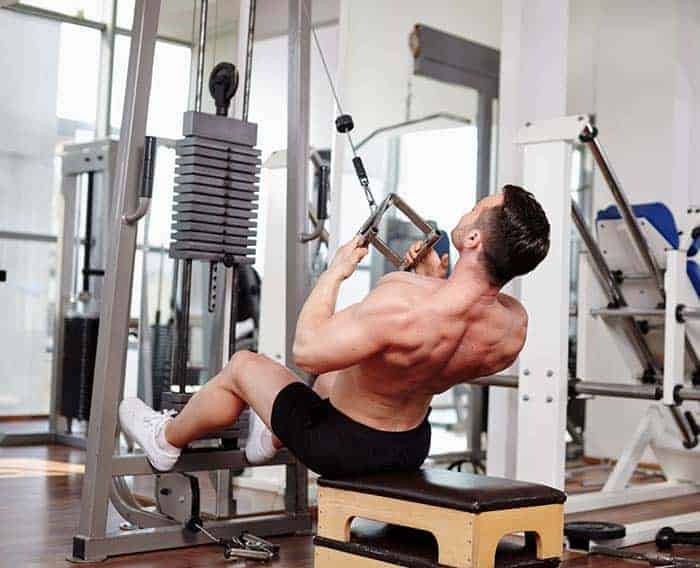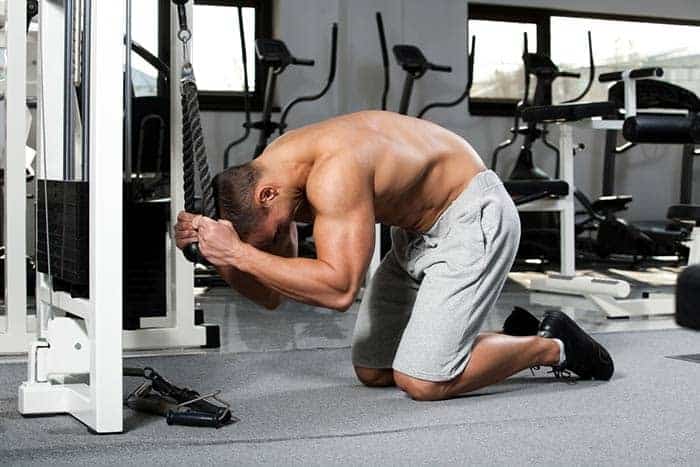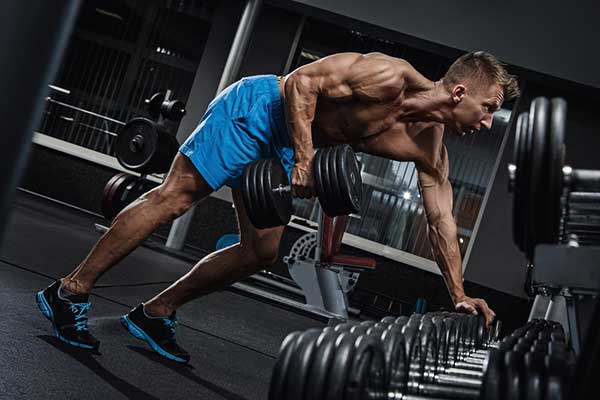
Content Table
Exercise Variations for Growing your Muscle Quickly
I’ve discussed set design, rep variations and load manipulation in previous articles, all of which I encourage you to read if you are interested in maximizing muscle growth from your training.
This article will cover another element of training that you can play with to stimulate improved mass gains: the exercises themselves.
There are several changes that can be made to the exercises you do, including the order in which they are performed, your body position, the type of grip you use, unilateral versus bilateral and so on.
Again, the exercise changes trigger adaptations to be made that can improve your strength and size improvements when you return to your regular training program or move on to another variant.
Extended Sets
The extended set describes a lot of sets. The “extended” part simply refers to the set lasting longer than it otherwise would due to something you do to allow it.
A dropset is technically an extended set because in the process of reducing the weight in increments, you can keep working the muscles to failure again and again within the same set.
You can extend a set by changing your grip on a barbell. Moving from a close to wide grip on the bench press, for example, can enable you to push out a few more reps in the set.
Adjusting your stance in a squat or deadlift can similarly extend the set. Widening your stance throughout a set of leg exercises should help you squeeze more from the set.

Hardest to Easiest
Perhaps the most effective extended set variation is that in which you adjust your position through the set from the most difficult to the easiest, while using the same load from the beginning to end.
Put another way, each positional shift puts your body in a stronger position to complete the movement you are doing.
The best example of this in my opinion will always be the bench press or dumbbell bench press with an adjustable bench. For optimal results, the bench should be able to be adjusted from incline to decline.
The trick here is to use a weight which you can only complete mid single figure reps with on the incline bench press. This will be a load that sits in your strength building range of 4 to 6 repetitions.
The first portion of the set you should complete 4 reps in the incline bench position. Your only break is the quick time in which it takes to adjust the bench to its flat position.
For the second portion of the set you should attempt to complete another 4 reps but only if this does not work your muscles to failure. If you can only perform 2 reps then so be it. Once complete, adjust the bench once more to its incline position.
In the final portion of the set you should rep to muscle failure in the decline position.
When you perform a set like that, what you are doing is using a load which is normally within your strength range of a maximum or 6 reps and extending the set to a range more synonymous with hypertrophy, somewhere in the range of 8 – 12 repetitions.
Muscle Fibers
All that you change is your position, which in turn helps you recruit more muscle fibres to complete the task. By making your position stronger throughout the set you are extending the set, and thus heightening the stimulus for hypertrophy.
This has excellent carry-over to your regular strength and hypertrophy training.
There are several exercises within which you can change position to achieve similar results. The shift can range from something as simple as a grip to the kind of equipment manipulation discussed in the adjustable bench press example.
Another good example for an extended bench press set using dumbbells involves changing your grip each time.
Start with your grip reversed (palms facing you) and complete the first portion of the set like that. You can do this either on a flat bench or a slight incline.
The reverse grip may feel odd at first if you are not used to it, but you will find that pushing the dumbbells up from closer to your waist will begin to help.
This grip activates the upper pectoral muscles more than an incline bench with regular grip does.
Reverse Grip
The reverse grip is also the most difficult to perform out of the three grips in this extended set.
For the second part of the set, you should twist the dumbbells roughly 90 degrees so that you have a neutral grip (neutral grip is what you would use for dips on parallel bars).
The third part of the set should be completed with a traditional bench press grip / overhand grip (aka prone grip), i.e. knuckles towards your face.
I’ll give a third example, and that is the pull-up. If you are used to doing bodyweight pull-ups and want to get more out of them, this extended set is for you. You can obviously add weight if you need to as well.
The hardest form of a pull-up is the prone, or overhand, grip (palms facing away from you). So begin your set with those.
If your gym or home equipment has neutral grips, then move to those next (parallel, palms facing one another).
Next move to under hand/reverse grip and complete the set to failure. This last element is the easiest form of a pull-up because it recruits your biceps and allows you to tuck your core more tighter.

Unilateral Exercises – One-Sided Lifting
If you follow major fitness publications, or social media trainers, you’ll see unilateral training is becoming a big thing.
Oddly, those of us who know what we’re talking about, and don’t just follow trends, have been doing one-sided lifts from the very beginning.
A basic example is the shoulder press. Bilateral shoulder pressing involves a barbell, or two dumbbells. being pressed vertically to train both left and right deltoid groups.
Unilateral training involves lifting only with one side at a time. There are lots of benefits to this.
Bilateral Deficit
Bizarrely, our bilateral lifts are not as strong as the sum of their equivalent unilateral lifts.
The weight you can push on your one-arm dumbbell press is probably more than half of what you can bench press standard.
A number of studies have confirmed this to be true, though they can’t quite explain why. It probably has something to do with more support and stabilizer muscles being recruited for one side rather than being shared by both.
Another interesting paradox is that by training unilaterally, the bilateral deficit becomes smaller!
Cross Transfer
Perhaps even weirder than the bilateral deficit thing is that training on one side of your body improves the strength of the untrained side.
Again, there’re studies to back this up, no matter how crazy it sounds. In fact, there are instances of people training certain muscles for several days on end but only on one side of the body. When their untrained side was tested afterwards it had gained considerable strength. [source].
This phenomenon is called cross-education, or cross transfer. It also goes a long way to support the theory that initial strength gains are largely a case of neural adaptation over physical growth.
Either way, strength helps size and size helps strength, so unilateral training is good.
Core Improvements
Another benefit is to your core muscles and stabilizers. Your core’s purpose is not to flex the spine (as most people who do crunches seem to think).
The core muscles are stabilizers, there to resist other movement by bracing and acting as a counter point.
Building the core group of muscles also helps improve your overall strength and keeps you injury free.
Unilateral lifting encourages new growth and strength improvements in a novel way, by making the core activate in different ways to provide counterbalance to the one sided lifts.
The carry-over to your other training is excellent.
Adaptation
Aside from the other benefits, unilateral training is another stimulus for growth. Perhaps your weak side is weaker than your strong side by enough to make a difference to your regular training.
If that’s the case then adding some unilateral training into your program, or indeed following it as a program for a while, will help to bring your weak side up to par with your strong side. When you then return to bilateral training, you will notice the difference immediately.
Often, we don’t realize we are creating imbalance with bilateral training. Our strong side can take over and our core compensates for it.
The lift might look perfectly fine on inspection, when in fact there is an ever-growing differential being introduced between your left and rights sides. And ultimately, that can start to show in your appearance, and through injury caused by imbalance.
Unilateral training: it’s not just a gimmick. Try it out and get the benefits.
